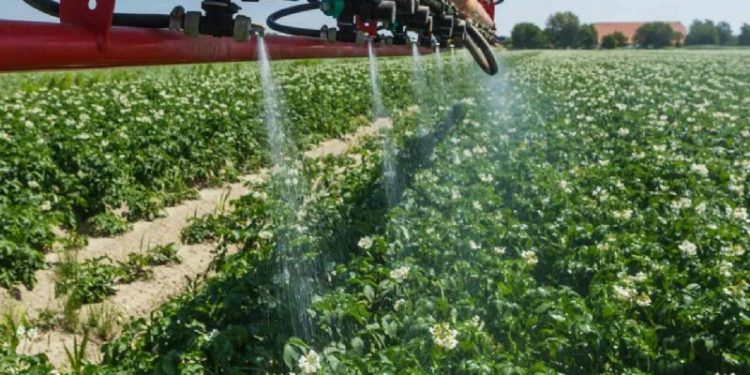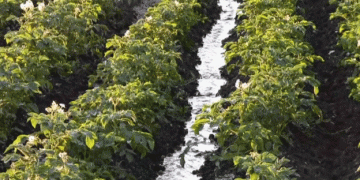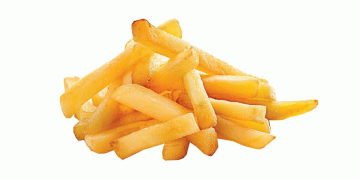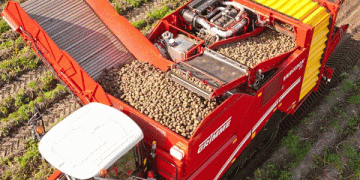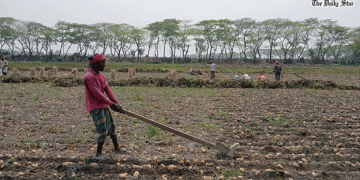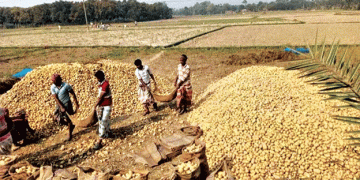The Environmental Plant Protection Index (MIG) calculates the impact of the use of plant protection chemicals, as well as low-risk substances and biological agents. Producers, supply chain participants, experts and governments can use this tool for concrete work to reduce the environmental impact of resources in growing systems.
As part of a public-private partnership MIG, Wageningen Research University (wur), the scientific consulting firm CLM and the public organization Nature & Environment have been working on a methodology for calculating the environmental indicator for the past four years. This work is now almost completed and the final project report will be published shortly. The next year will be spent on supplementing data and calculation rules and putting MIG into practice.
This tool is expected to be used by farmers and gardeners, networks, plant protection experts and government agencies from 2024. As a measuring instrument, the MIG was developed on behalf of a broad consortium of parties from agriculture and horticulture and the Ministry of LNV. It is co-financed by the leading horticulture and raw materials sector.
This week the completion of the MIG project was discussed in a webinar. LTO Nederland, Subsidiary Akkerbouw, Royal FloraHolland, GroentenFruit Huis, Natuur&Milieu and the IDH Trade Foundation have taken the initiative to this end. The aim is to determine what is needed to be able to apply this indicator in everyday practice during the present time and year, for example, for growing companies or for purposes further up the food chain.
Objectives in the field of environmental protection
During the webinar, WUR researcher Johan Bremmer explained the methodology behind MIG. With the help of the module, data on the use of resources, the method of application and measures taken to limit emissions into the environment are converted into data on the impact on the environment. MIG focuses on pollinating and beneficial insects, worms, surface and ground water, birds and mammals as targets for environmental protection.
“MIG defines for farmers and horticulturists how they rate sustainability compared to previous years or peers,” explains Bremmer. “Network members can compare the environmental impact of products and possibly use this score to obtain quality labels. Experts use this information to develop strategic plans for growing organic crops. Finally, the government gains a deeper understanding of the burden on the environment. and raises awareness of the need to further ensure sustainability.”
On behalf of the six organizations mentioned, Schuttelaar & Partners prepared recommendations for the implementation and management of the tool. According to strategic adviser Leon Jansen, it will be at least ten to twelve months before the MIG is actually ready for testing. To prevent this from taking even longer, he warns that it is necessary to prioritize. It should also be clear to what extent international implementation of the indicator is necessary.
Priority for key applications
Jansen: “In our planning we have decided to focus on the Netherlands and the European application of MIG only for larger cash crops. In order to introduce the latest calculation rules and application dates for crop protection products, it would be good to give priority to the most important applications and substances. For guidance, we recommend set up a steering group with the project leader to keep the MIG up to date.’
On behalf of the commodity and trade sectors, GroentenFruit Huis en Glastuinbouw Nederland reacted positively to the calculation tool. Daan Van Empel, former program manager at GroentenFruit Huis, hopes MIG will end the blacklisting and redlisting of resources used in sales. ‘MIL brings rationality back into the crop protection debate. It allows you to focus on impact, not just resources.’
Crop health policy specialist Kira Bruders from greenhouse horticulture in the Netherlands expects MIG to become part of integrated plant protection. In addition, she advocates the introduction of the indicator in Europe, also as part of a level playing field for Dutch producers. In her opinion, comparing companies can be useful, but it is important to be able to identify differences. Otherwise, there is no context, she argues.
